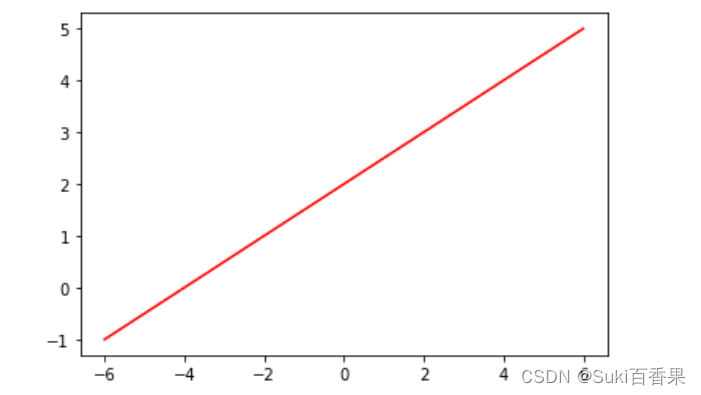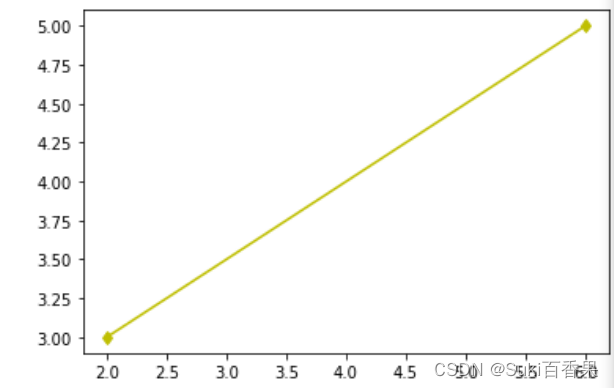sklearn.linear_model.LinearRegression
一、传统方式绘制直线并计算斜率
(1)绘制一条直线
%matplotlib inline import numpy as np import matplotlib.pyplot as plt x=np.linspace(-6,6,100) y=0.5*x+2 plt.figure() plt.plot(x,y,color='red') plt.show()
(2)已知两点,绘制一条直线
x=np.array([2,6]) y=np.array([3,5]) plt.plot(x,y,'yd-') plt.show()
(3)已知两点,求直线斜率
k=(y[1]-y[0])/(x[1]-x[0]) print(k)
二、利用sklearn线性回归求直线斜率
sklearn.linear_model.LinearRegression
LinearReagression(
'fit_intercept=True' #节距是否使用'normalize=False' #标准化
'copy_x=True' #复制x,是否覆盖原始的x
'n_jobs=None' #计算时设置的任务个数(-1表示使用所有的CPU)
)#大部分取默认值
属性
coef_ 输出系数,没有截距
intercept_ 输出截距
rank_ 输出矩阵的秩
singular 矩阵X的奇异值,仅在x为密集矩阵时有效
方法
fit(self,X,y[,sample_weight]) #训练模型,sample_weight为每个样本的权重值
predict(self,X) #模型预测,返回预测值
score(self,X,y['sample_weight]) #模型pinggu,放回R^2系数,最优质为1,说明所有数据都预测正确
get_params(self['deep]) #deep默认为True,返回超参数的值
set_params(self.** params) #修改超参数的值
利用线性回归求通过平面上两点(2,3)(6,5)的直线斜率#利用线性回归求通过平面上两点(2,3)(6,5)的直线斜率 from sklearn.linear_model import LinearRegression x=np.array([2,6]) y=np.array([3,5]) x=x.reshape(-1,1) #实例化 lr=LinearRegression() lr.fit(x,y) print("过两点(2,3)与(6,5)的直线斜率为:{},截距项为:{:.2f}".format(lr.coef_,lr.intercept_))Out:过两点(2,3)与(6,5)的直线斜率为:[0.5],截距项为:2.00
#模型预测 x_test=np.array([3,4,5]).reshape(-1,1) y_predict=lr.predict(x_test) y_predictOut:array([3.5, 4. , 4.5])
#模型评估--计算R 方值





 文章介绍了如何使用Python的sklearn库进行线性回归分析,包括传统方式绘制直线、计算斜率以及利用sklearn的LinearRegression模型。接着,文章讨论了糖尿病数据集上的线性回归应用,并探讨了岭回归的参数调节。最后,文章提到了LASSO回归及其在特征选择中的作用,并展示了不同正则化参数对模型性能的影响。
文章介绍了如何使用Python的sklearn库进行线性回归分析,包括传统方式绘制直线、计算斜率以及利用sklearn的LinearRegression模型。接着,文章讨论了糖尿病数据集上的线性回归应用,并探讨了岭回归的参数调节。最后,文章提到了LASSO回归及其在特征选择中的作用,并展示了不同正则化参数对模型性能的影响。


 最低0.47元/天 解锁文章
最低0.47元/天 解锁文章


















 256
256

 被折叠的 条评论
为什么被折叠?
被折叠的 条评论
为什么被折叠?










